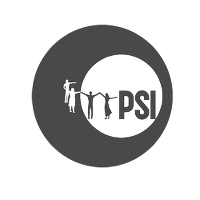By Antonia Wulff, Education International
In April 2020, schools and education institutions were shut down in 194 countries, affecting almost 1.6 billion students – 91.3 percent of students globally.[1] A rapid and large-scale shift to remote schooling took place, fundamentally changing the nature and conditions of teaching and learning and exacerbating inequality.
While the school closures were an emergency response to the pandemic, the context and solutions chosen say something about the education sector and what is at stake: underfunded and overburdened systems, competing conceptions of quality and a changing governance and financing landscape.
With more than a billion students still out of school, progress made in recent years towards universal quality education is in jeopardy. At least 463 million students have no access to remote schooling.[2] As past crises have shown, interruptions in schooling expose (girl) children to risks related to child labour, domestic and care work, child marriage, early pregnancy and gender-based violence. An estimated 23.8 million students, from pre-primary to tertiary levels, may never return to school.[3]
The shift to online learning has revealed a significant digital divide and helped bring inequity in education to the fore. Yet, too narrow a focus on the digital divide risks obscuring deeper structures of inequity by propagating the idea of universal access to education technology (edtech) and electronic devices being the solution.
The pandemic is accelerating a trend that was already underway: researchers Ben Williamson and Anna Hogan describe this trend as “global EdTech industry solutionism,” whereby private and commercial actors have “set the agenda, offered technical solutions for government departments of education to follow, and is actively pursuing long-term reforms”.[4] In 2019, Amazon spotted a market opportunity and launched Amazon Ignite, where teachers can sell their educational resources to their colleagues, targeting an underpaid workforce, enticing them into the gig economy, while charging them 30 percent of the sales plus a transaction fee.[5]
As schools were closed, online tools and platforms were introduced as emergency measures, often chosen without any transparency, accountability or involvement of those who will use the tools – teachers and students. It makes for a situation where (public) education depends on privately provided platforms, with implications for surveillance, data protection and privacy rights of both students and teachers. Importantly, it also shifts power away from the profession: many of the tools interfere with the professional autonomy of teachers, reducing the scope and quality of education provided and compromising the values and practice of the profession.
At a moment when public service expenditure was already declining in many regions, World Bank projections suggest that as much as 10 percent of education budgets could be cut as governments are under pressure to prioritize healthcare and social protection.[6] As household income declines, families will find it increasingly difficult to cover the direct and indirect costs of education. Strengthening public education systems must be recognized as an essential part of a people-centred, rights-based response to the pandemic. For countries to have the necessary fiscal space there will have to be significant debt relief and debt cancellation and a rejection of austerity and market-based approaches to development.
At this time, governments need to assume their role as the guarantors of inclusive equitable quality education, defending the public nature of education and ensuring the necessary related public investment. Governments need to regulate the role of private actors in education and engage in social and policy dialogue with teachers, education support personnel and their unions. This is the only way of ensuring that quality is upheld and education enjoyed equitably.
[1] See UNESCO monitoring, https://en.unesco.org/covid19/educationresponse
[2] UNICEF, “COVID-19: Are children able to continue learning during school closures,” New York, 2020, https://data.unicef.org/resources/remote-learning-reachability-factsheet/
[3] UNESCO, “COVID-19 education response: how many students are at risk of not returning to school?” Paris, 2020, https://unesdoc.unesco.org/ark:/48223/pf0000373992?locale=en
[4] B. Williamson and A. Hogan, Commercialization and privatization in/of education in the context of Covid-19, Brussels: Education International, 2020, p. 2, https://issuu.com/educationinternational/docs/2020_eiresearch_gr_commercialisation_privatisation
[6] World Bank, “The impact of the covid-19 pandemic on education financing,”Washington, D.C., 2020, http://documents1.worldbank.org/curated/en/479041589318526060/pdf/The-Impact-of-the-COVID-19-Pandemic-on-Education-Financing.pdf








